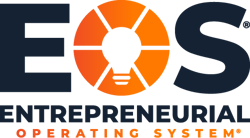The most common challenge leadership teams encounter as they learn to IDS™ (Identify, Discuss, Solve) issues is that they move straight to discussion without identifying the root cause of the issue. There is only one difficulty with that approach – the issue is merely a symptom of what is truly happening. If you start discussing right away, you will most likely solve the wrong issue.
Topics: EOS, Issues List, Leadership Teams, Solving Issues
How Do You Know If You’re Leading and Managing Effectively?
Written by Jim Coyle on June 4, 2018
How Well Are You Leading And Managing Your Team?
For most companies, this question doesn’t have an easy answer, but it’s usually something like this: “I guess pretty good? My team seems to like me.” Over the years, I have heard versions of this answer many times – but only from companies not running on EOS®! It’s scary how many things are wrong with that answer, not least of which is the belief that being liked is an indication of strong leadership and management skills. These leaders and managers clearly don’t have a way to measure how they are doing.
With a company running on EOS, the answer is completely different.
Topics: EOS, Leadership Teams, Solving Issues, How to Be a Great Boss
On your journey to becoming your best in business, you’ll need to make some tough people decisions. Usually those decisions revolve around Right People/Right Seat issues. In the EOS Process™ we use the People Analyzer™ with GWC™ (Get It/Want It/Capacity to Do It) to identify the root cause of a team’s specific people-related issues. The most common people issues are:
- Wrong Person/Right Seat – someone who doesn’t share the core values but is in the Right Seat.
- Right Person/Wrong Seat – a person who shares the core values but is in the Wrong Seat, i.e., they don’t get it, want it, or have the capacity to do it.
Sometimes the tough people decision is to fire an employee who doesn’t get it, want it, or have the capacity to do the job. One of my clients recently had to make that tough decision. Afterwards, the Visionary told me about the way the employee responded to being fired.
Topics: EOS, Employees, Team Health
Do you know how many people are directly affected by the work you do? I ask leadership teams this question and they usually answer with the number of people they employ – 75 or 100 or 120.
“How about your vendors, employees’ families, and all your customers?” I ask. Some light bulbs start turning on, and they’ll guess a couple thousand.
Even a couple thousand is a low number. Your work and your team make a huge difference. A number of years ago, my team crunched some numbers and determined that the average company of 100 employees directly affects 10,000 people. This includes all of your staff, your families, your vendors and partners, your customers and their teams, and then all the work you do in the community.
Topics: EOS, Company Culture, Leadership Teams
I had a recent client session end with the team looking a little hangdog and expressing some disappointment. This was an EOS Vision Building™ 1 session, which includes getting the team’s Accountability Chart to about 90% complete and defining their Core Values.
When we dug into their disappointment, here’s what emerged:
- One team member was unhappy that in strengthening the Accountability Chart, they had surfaced a lot “Right Person/Right Seat” issues that needed to be solved.
- They were all unhappy that they were going to have to figure out how to make the Core Values they defined fit into the legacy Core Values imposed on them by their corporate parent.
So why were they disappointed?
Topics: EOS, Core Values, Accountability Chart







